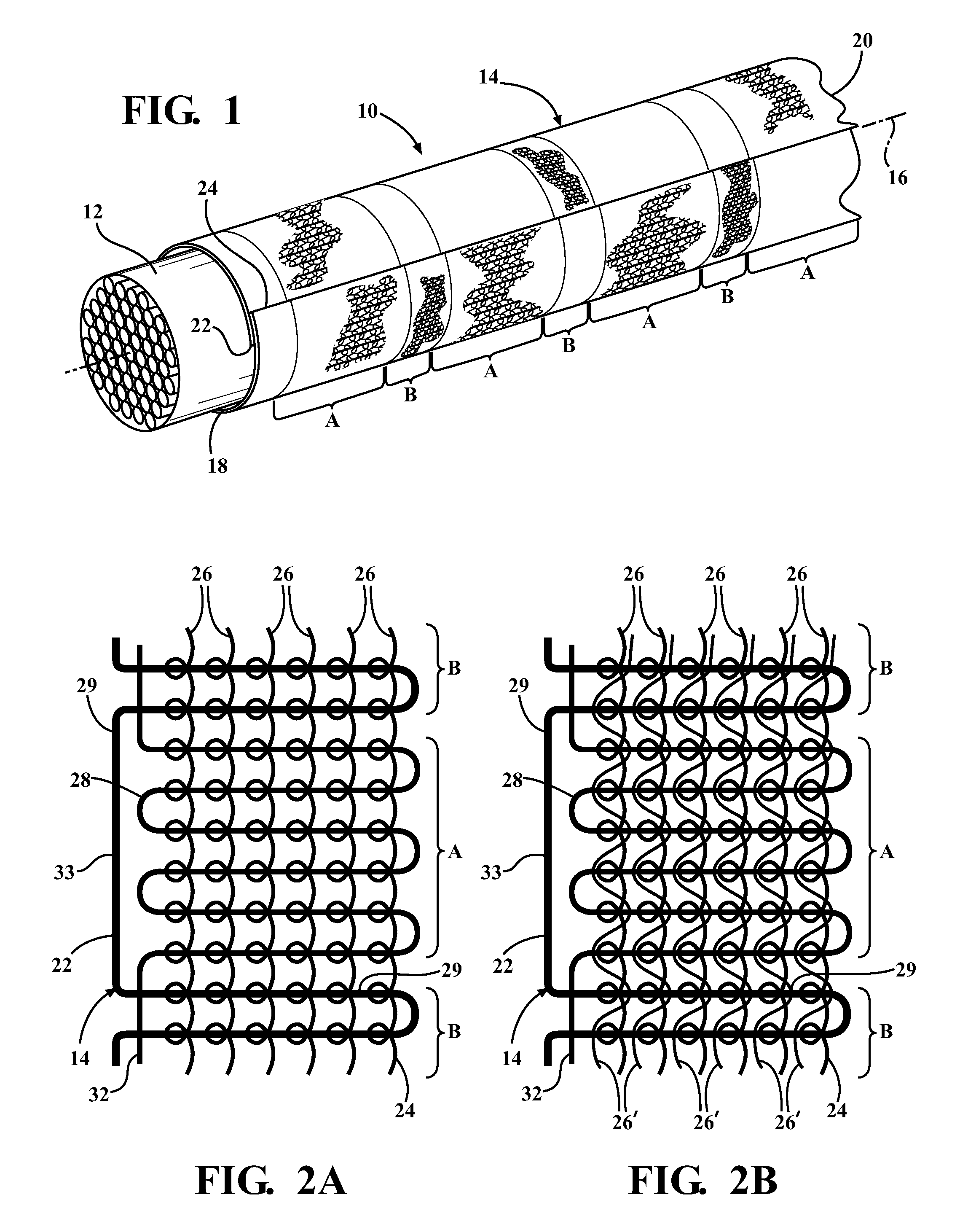Non-kinking wrapple knit sleeve and method of construction thereof
a knit sleeve and non-kinking technology, applied in knitting, ornamental textile articles, transportation and packaging, etc., can solve the problems of reducing hoop strength, sleeve wall opening along seam between overlapping edges and/or kinking, and inhibiting ability, etc., to achieve enhanced flexibility, enhanced structural integrity, and enhanced flexibility
- Summary
- Abstract
- Description
- Claims
- Application Information
AI Technical Summary
Benefits of technology
Problems solved by technology
Method used
Image
Examples
Embodiment Construction
[0043]Referring in more detail to the drawings, FIG. 1 illustrates a warp knit textile sleeve 10 constructed in accordance with one aspect of the invention wrapped about an elongate member 12 (e.g. flexible cable or wire harness or other flexible member) to be protected. The sleeve 10 has an elongate wall 14 that extends along a longitudinal axis 16 between opposite ends 18, 20 with lengthwise extending opposite free edges 22, 24 extending parallel or substantially parallel to the longitudinal axis 16 between the opposite ends 18, 20. As best shown in FIGS. 2A-2D, in accordance with different respective embodiments of the invention, the wall 14 is warp knit including lengthwise extending warp yarns 26 and circumferentially extending weft yarns, shown here by way of example and without limitation as a pair of differently sized weft yarns 28, 29. The weft yarns 28, 29 are knit to form a plurality of adjacent discrete annular bands, shown by way of example and without limitation as fir...
PUM
| Property | Measurement | Unit |
|---|---|---|
| diameter | aaaaa | aaaaa |
| diameters | aaaaa | aaaaa |
| axial length | aaaaa | aaaaa |
Abstract
Description
Claims
Application Information
 Login to View More
Login to View More - R&D
- Intellectual Property
- Life Sciences
- Materials
- Tech Scout
- Unparalleled Data Quality
- Higher Quality Content
- 60% Fewer Hallucinations
Browse by: Latest US Patents, China's latest patents, Technical Efficacy Thesaurus, Application Domain, Technology Topic, Popular Technical Reports.
© 2025 PatSnap. All rights reserved.Legal|Privacy policy|Modern Slavery Act Transparency Statement|Sitemap|About US| Contact US: help@patsnap.com



